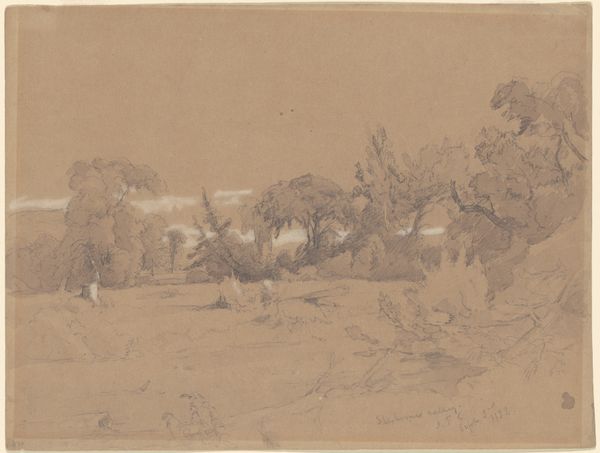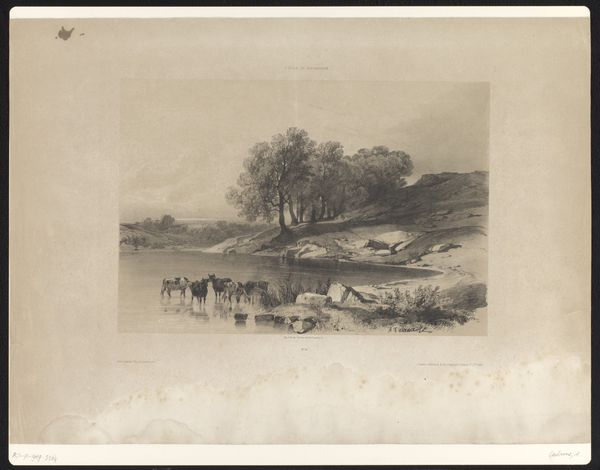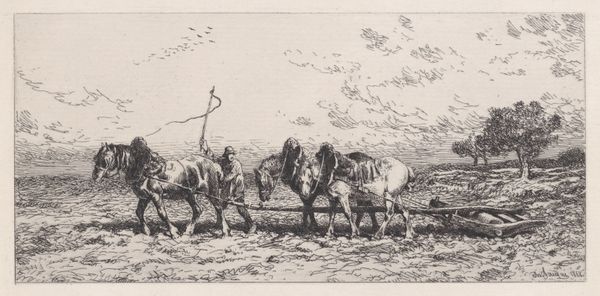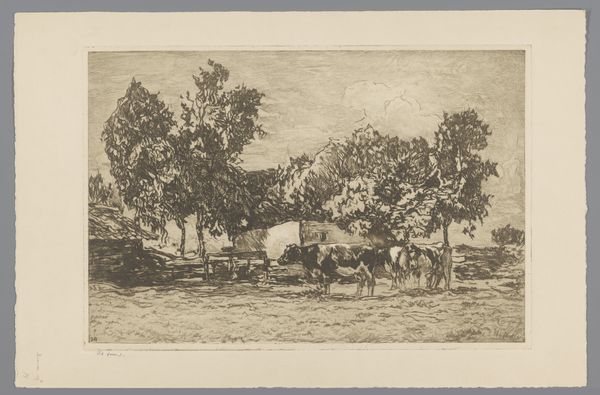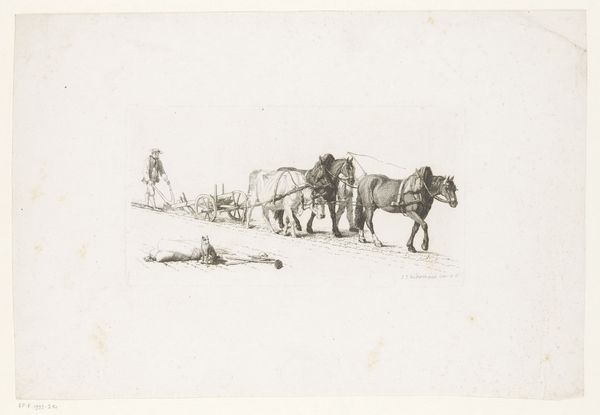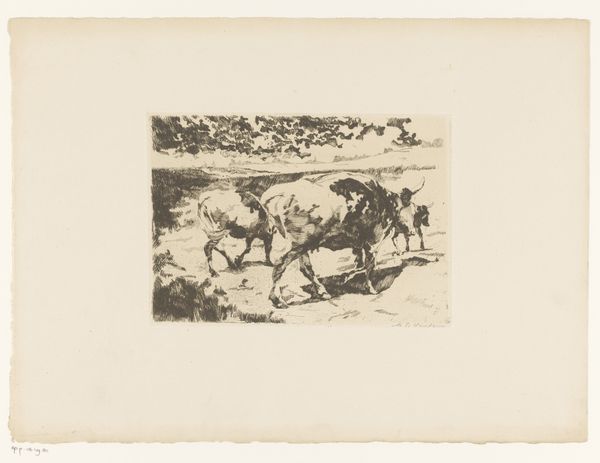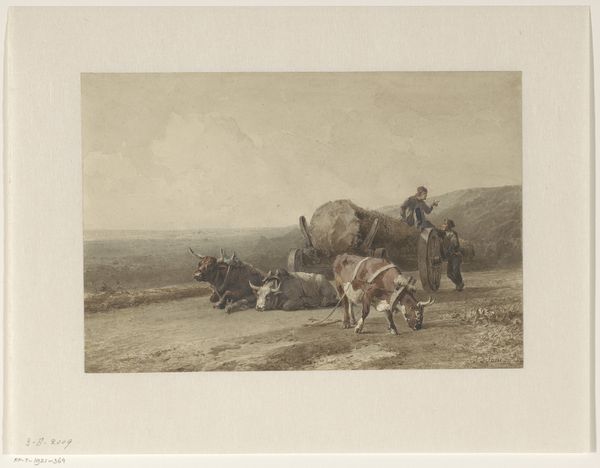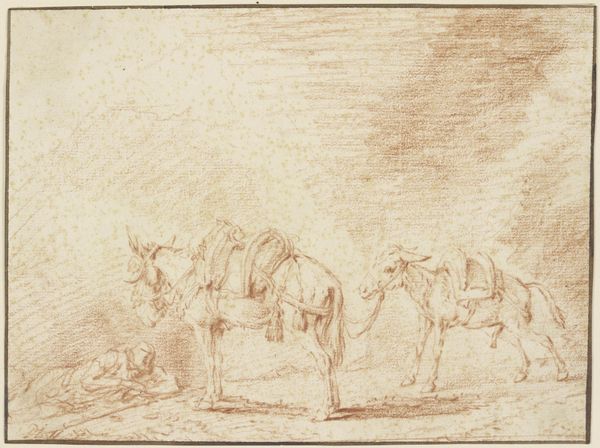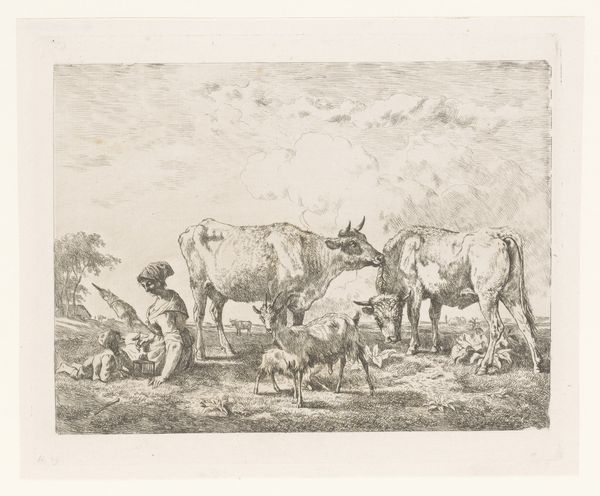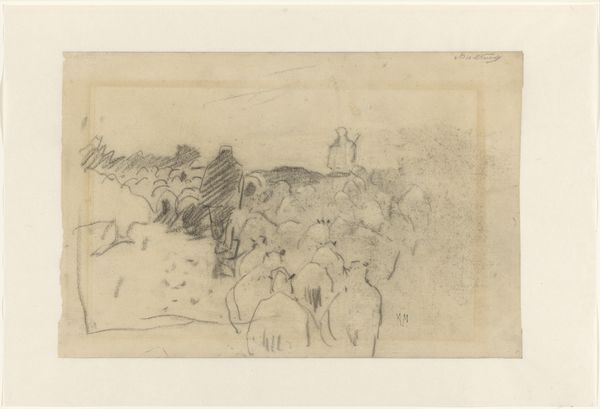
drawing, print, paper, ink, pen
#
drawing
# print
#
landscape
#
figuration
#
paper
#
ink
#
pen
#
genre-painting
#
realism
Dimensions: 214 × 310 mm
Copyright: Public Domain
Curator: Look at this drawing titled "Mountain Goats and Dog," created around the 18th century. The artist goes by the name of Allwaert of Ghent. It's rendered in pen and ink on paper. Editor: My first impression is one of arrested action, like a fleeting moment perfectly captured, a sense of almost frantic energy trying to escape the confines of the paper itself. Curator: Yes, and that frenetic energy stems directly from the application of the ink, I think. Note the hurried, almost scribbled quality of the lines. The rapid, repetitive strokes convey the shaggy texture of the goats’ coats, but also the immediacy of the artist's hand, don’t you think? Editor: Indeed. I’m immediately drawn to the contrast between the still, almost languid goats and the bounding dog. Dogs are frequently seen as symbols of loyalty and vigilance; the dynamic pose creates a striking contrast to the static goats. There’s a narrative tension, like the anticipation of something about to happen or having already happened. Curator: Interesting. From my perspective, what strikes me most is the social context in which such a drawing was created. Paper and ink, though relatively accessible, were still precious resources. This detailed rendering suggests either a commission or a personal investment by the artist, a way to understand both natural world and also labor related to domestication of these animals. Editor: I see that. Also note the seemingly casual inclusion of the classical urn in the lower part of the work. This small detail brings with it connotations of a pastoral Golden Age and elevates what might otherwise have been a mere genre scene. Curator: Right, these classical references tie into the prevailing tastes and intellectual currents of the time. Looking at the making of this artwork, and specifically at the use of drawing and printmaking processes, raises an interesting question: how was such an image disseminated and consumed within its specific social context? Was it intended as a study for a larger painting, or was it an artwork meant for wider distribution through prints? Editor: Well, either way, the symbolic language is compelling and speaks to humanity’s intertwined relationship with nature. The contrast between the wild goats and domesticated dog creates a captivating tableau of primal energy and carefully crafted cultural symbols. Curator: I agree. Thinking about its physical presence as an object gives us insight into artistry of the era and economy surrounding creative processes of its time. Editor: And from an iconographic viewpoint, we've gained insight into interplay of dynamic imagery and symbolism as it gives us glimpses of culture’s core values.
Comments
No comments
Be the first to comment and join the conversation on the ultimate creative platform.
